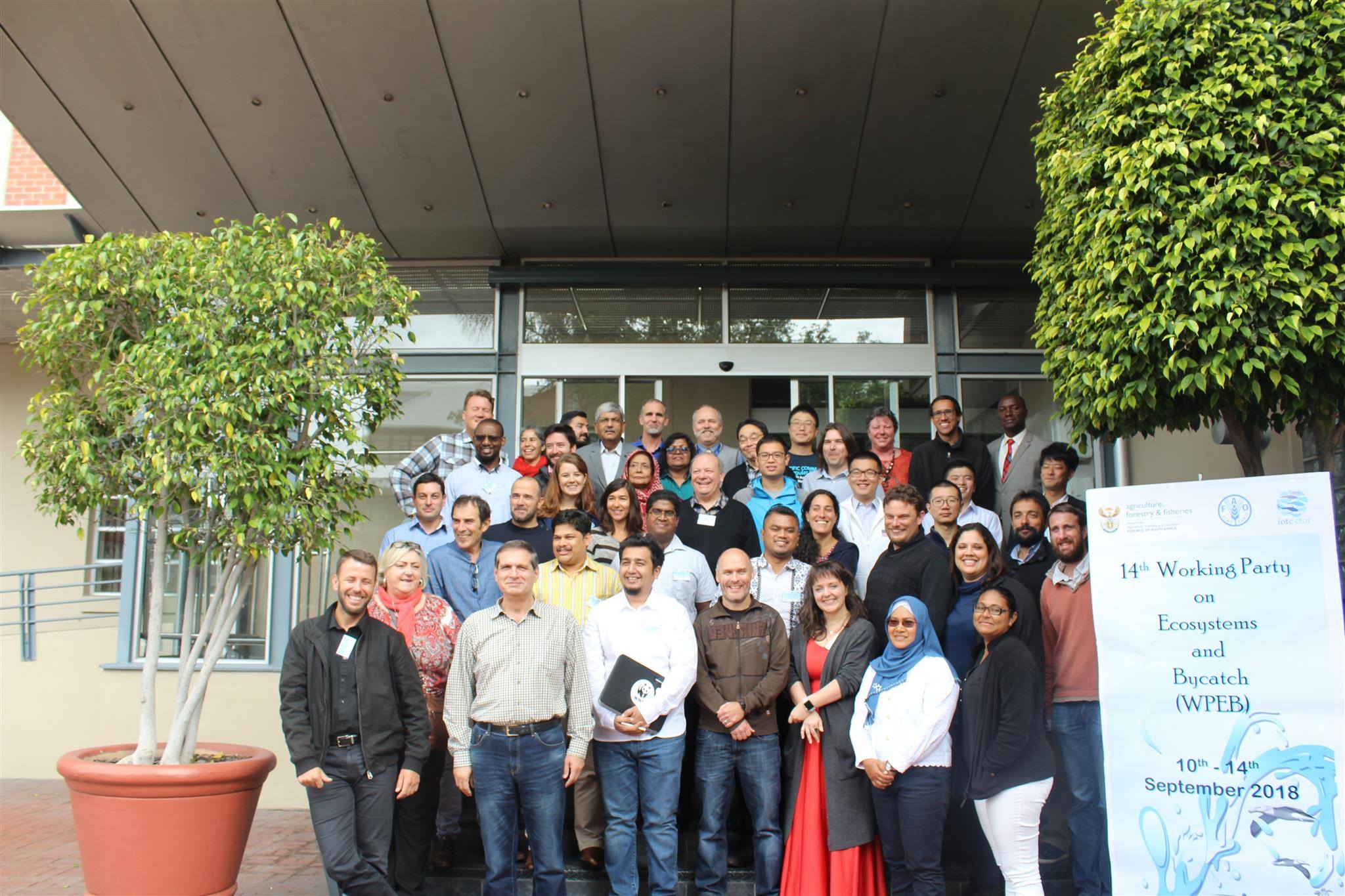The 2018 intersessional meeting of the Indian Ocean Tuna Commission (IOTC) Working Party on Ecosystems and Bycatch (WPEB-14) was held in Cape Town, South Africa, from 10-14 September 2018.

The Albatross and Petrel Agreement was represented by Anton Wolfaardt, Co-convenor of its Seabird Bycatch Working Group. The meeting considered a number of seabird-related papers, one of which (IOTC-2018-WPEB14-26) was submitted and presented by ACAP, outlining its latest best-practice advice for mitigating seabird bycatch in pelagic longline fisheries. The WPEB re-iterated its support for the ACAP best-practice advice, which has also previously been endorsed by the IOTC’s Scientific Committee.
There was a range of other seabird-related papers and issues discussed at the meeting, all available online. These included a report of recent estimates of seabird bycatch associated with the Spanish surface longline fleet targeting swordfish in the Indian Ocean (IOTC-2018-WPEB14-23), different methodological approaches to assessing seabird bycatch (IOTC-2018-WPEB14-24; IOTC-2018-WPEB14-25; and IOTC-2018-WPEB14-45), and the results of a pilot project to investigate the value of using trans-shipment observers as a tool for understanding the use of seabird bycatch mitigation measures on vessels operating on the high seas (IOTC-2018-WPEB14-44). Click here to access these and the other meeting documents and information papers considered by the working party.
The abstract of ACAP’s meeting document follows:
“The incidental mortality of seabirds, mostly albatrosses and petrels, in longline fisheries continues to be a serious global concern and was the major reason for the establishment of the Agreement on the Conservation of Albatrosses and Petrels (ACAP). ACAP routinely reviews the scientific literature regarding seabird bycatch mitigation in fisheries, and on the basis of these reviews updates its best practice advice. The most recent review was conducted in September 2017, and this document presents the outcome of that review and the summary advice pertaining to best practice measures for mitigating seabird bycatch. ACAP has confirmed that a combination of weighted branch lines, bird scaring lines and night setting remains the best practice approach to mitigate seabird bycatch in pelagic longline fisheries. In addition, ACAP has since 2016 also endorsed the inclusion in the list of best practice mitigation measures of two hook-shielding devices. These devices encase the point and barb of baited hooks until a prescribed depth or immersion time has been reached (set to correspond to a depth beyond the diving range of most seabirds) thus preventing seabirds gaining access to the hook and becoming hooked during line setting. On the basis of the September 2017 review, the only update to the ACAP best practice advice for reducing bycatch of seabirds in pelagic longline fisheries related to recommendations concerning the aerial extent, streamer line configuration, attachment height and weak link of bird scaring lines for small (<35m) vessels.”
Click here to access ACAP’s 26-page meeting document.

Photograph from BirdLife South Africa
Anton Wolfaardt, Co-convenor, ACAP Seabird Bycatch Working Group, 08 October 2018

 English
English  Français
Français  Español
Español